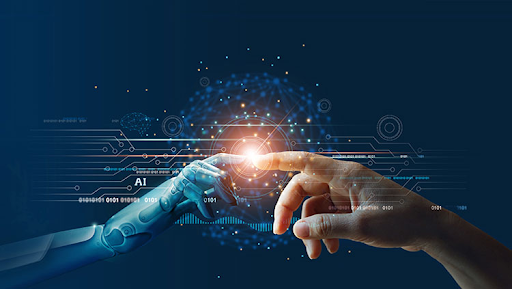
An AI chess program is a computer program that plays chess. There are many levels of skill. The best AI chess players will have at least three thousand. If the computer isn't close to this, you can adjust the computer's level by changing the level. The score will be shown to the right. If one color is leading tactically, it will also show it.
AlphaZero
The AI chess player known as AlphaZero has a powerful representational approach. It analyzes the current board layout, previous moves, and makes recommendations to determine probability of winning. AlphaZero uses a representational analysis algorithm known as M.C.T.S., which focuses on the best possible move to win. It currently ranks fourth in world rankings with its neural network, which is trained on 80,000 positions every second.
While many believe that AlphaZero is an artificial intelligence, a recent study suggests that AlphaZero can learn a game anew, which explains its unusual, dynamic and creative playing style. Expert chess players, including Matthew Sadler, Natasha Regan, and others, have analyzed AlphaZero's play style. They discovered that AlphaZero is unique in his strategy.

Deep Blue
IBM's Deep Blue artificial intelligence chess software was created. This algorithm uses parallel chess tree searches to analyse millions of possible moves and determine which move is the most appropriate for a position. It is capable of exploring up to 100 million chess positions per second. IBM researchers did not have any experience with chess so they invited Joel Benjamin, a U.S. Grandmaster, and Joel Benjamin, to test their new program.
IBM researchers used Deep Blue algorithm to develop a new machine. The team created new chips for chess positions and optimized large numbers processors to run in parallel. The final machine consisted of a 30 processor supercomputer and 480 custom embedded circuits. Deep Blue called the new version Deeper Blue. The machine was capable to explore 40 years into the future. Its success was announced on 1998.
Humans
In fifteen year, human chess gamers have not beaten any machine. The dominance in AI chess games has led to a decline in creativity and the development of soulless algorithms. New research shows that AI could prove to be beneficial to humans. The new chess engine mimics human play, and can improve the skills of both amateur and professional players. An AI advantage is also evident in chess, according to a University of California Berkeley study.
Computers are better at chess than humans because they can learn from previous games, and then study them. Human chess players spend years perfecting their skills. The AI can learn the game in half the time it takes a human. AI doesn’t need to rest and doesn’t suffer from the limitations that human study habits can cause. AI may one day be better at chess than humans.

Silicon
Magnus Carlsen (23-year-old world champion in chess) met recently with techies in Mountain View. Peter Thiel (a billionaire investor) was interviewing him. The audience laughed and reacted to his concise answers. It isn't surprising that Silicon Valley techie would like to know the secrets of a great chess player.
The silicone chessboard can be cleaned with a damp cloth. You should not let it get too wet. Use the clean side. It is important to repeat this step after every use. If dirt hardens, it will be difficult to clean. Wiping down the board after every use is the best way to keep it clean. If the dirt is too thick and hard to remove, you may have to buy a new board altogether.
FAQ
Who is leading the AI market today?
Artificial Intelligence is a branch of computer science that studies the creation of intelligent machines capable of performing tasks normally performed by humans. It includes speech recognition and translation, visual perception, natural language process, reasoning, planning, learning and decision-making.
Today, there are many different types of artificial intelligence technologies, including machine learning, neural networks, expert systems, evolutionary computing, genetic algorithms, fuzzy logic, rule-based systems, case-based reasoning, knowledge representation and ontology engineering, and agent technology.
It has been argued that AI cannot ever fully understand the thoughts of humans. But, deep learning and other recent developments have made it possible to create programs capable of performing certain tasks.
Google's DeepMind unit in AI software development is today one of the top developers. Demis Hashibis, who was previously the head neuroscience at University College London, founded the unit in 2010. In 2014, DeepMind created AlphaGo, a program designed to play Go against a top professional player.
Which are some examples for AI applications?
AI is used in many fields, including finance and healthcare, manufacturing, transport, energy, education, law enforcement, defense, and government. Here are just some examples:
-
Finance - AI has already helped banks detect fraud. AI can scan millions upon millions of transactions per day to flag suspicious activity.
-
Healthcare – AI is used in healthcare to detect cancerous cells and recommend treatment options.
-
Manufacturing – Artificial Intelligence is used in factories for efficiency improvements and cost reductions.
-
Transportation – Self-driving cars were successfully tested in California. They are being tested in various parts of the world.
-
Utilities are using AI to monitor power consumption patterns.
-
Education - AI has been used for educational purposes. Students can communicate with robots through their smartphones, for instance.
-
Government – Artificial intelligence is being used within the government to track terrorists and criminals.
-
Law Enforcement - AI is used in police investigations. Databases containing thousands hours of CCTV footage are available for detectives to search.
-
Defense - AI systems can be used offensively as well defensively. It is possible to hack into enemy computers using AI systems. Protect military bases from cyber attacks with AI.
How does AI work?
An artificial neural networks is made up many simple processors called neuron. Each neuron receives inputs form other neurons and uses mathematical operations to interpret them.
Layers are how neurons are organized. Each layer serves a different purpose. The raw data is received by the first layer. This includes sounds, images, and other information. These data are passed to the next layer. The next layer then processes them further. Finally, the last layer produces an output.
Each neuron has a weighting value associated with it. This value gets multiplied by new input and then added to the sum weighted of all previous values. If the number is greater than zero then the neuron activates. It sends a signal along the line to the next neurons telling them what they should do.
This cycle continues until the network ends, at which point the final results can be produced.
Statistics
- That's as many of us that have been in that AI space would say, it's about 70 or 80 percent of the work. (finra.org)
- While all of it is still what seems like a far way off, the future of this technology presents a Catch-22, able to solve the world's problems and likely to power all the A.I. systems on earth, but also incredibly dangerous in the wrong hands. (forbes.com)
- According to the company's website, more than 800 financial firms use AlphaSense, including some Fortune 500 corporations. (builtin.com)
- In 2019, AI adoption among large companies increased by 47% compared to 2018, according to the latest Artificial IntelligenceIndex report. (marsner.com)
- By using BrainBox AI, commercial buildings can reduce total energy costs by 25% and improves occupant comfort by 60%. (analyticsinsight.net)
External Links
How To
How do I start using AI?
Artificial intelligence can be used to create algorithms that learn from their mistakes. You can then use this learning to improve on future decisions.
A feature that suggests words for completing a sentence could be added to a text messaging system. It would use past messages to recommend similar phrases so you can choose.
It would be necessary to train the system before it can write anything.
Chatbots can also be created for answering your questions. If you ask the bot, "What hour does my flight depart?" The bot will tell you that the next flight leaves at 8 a.m.
You can read our guide to machine learning to learn how to get going.